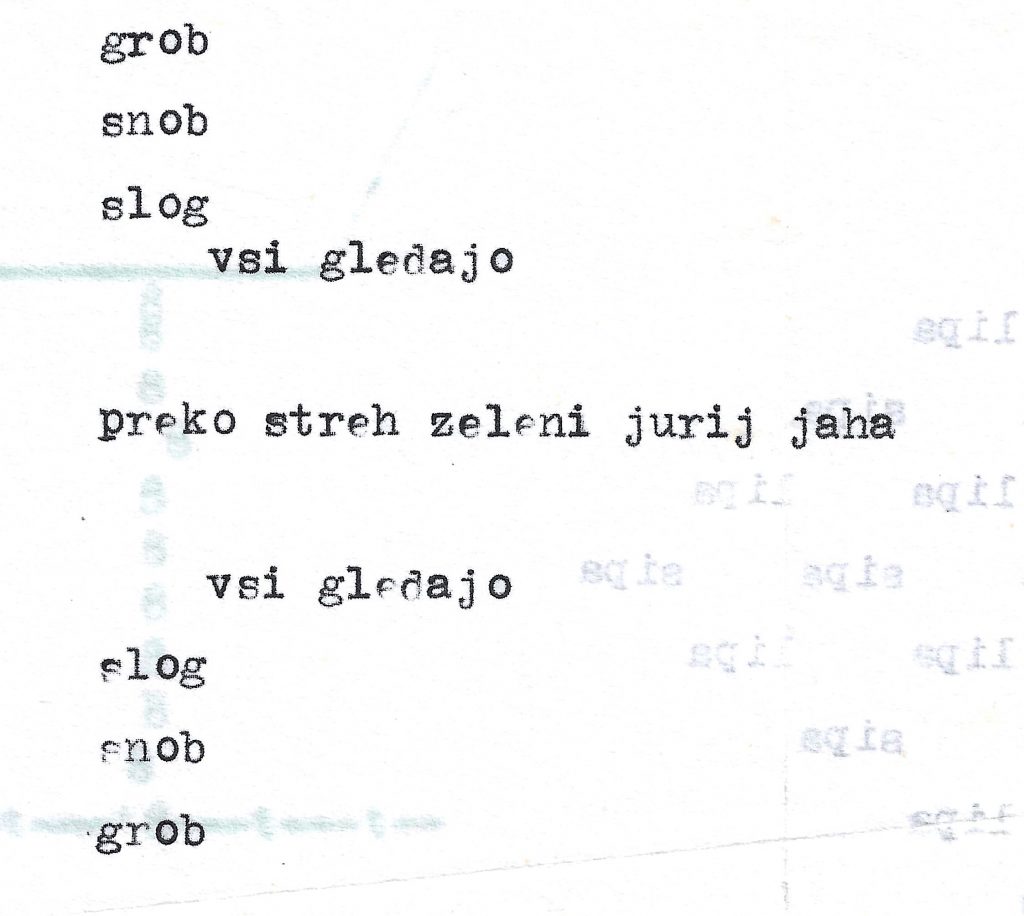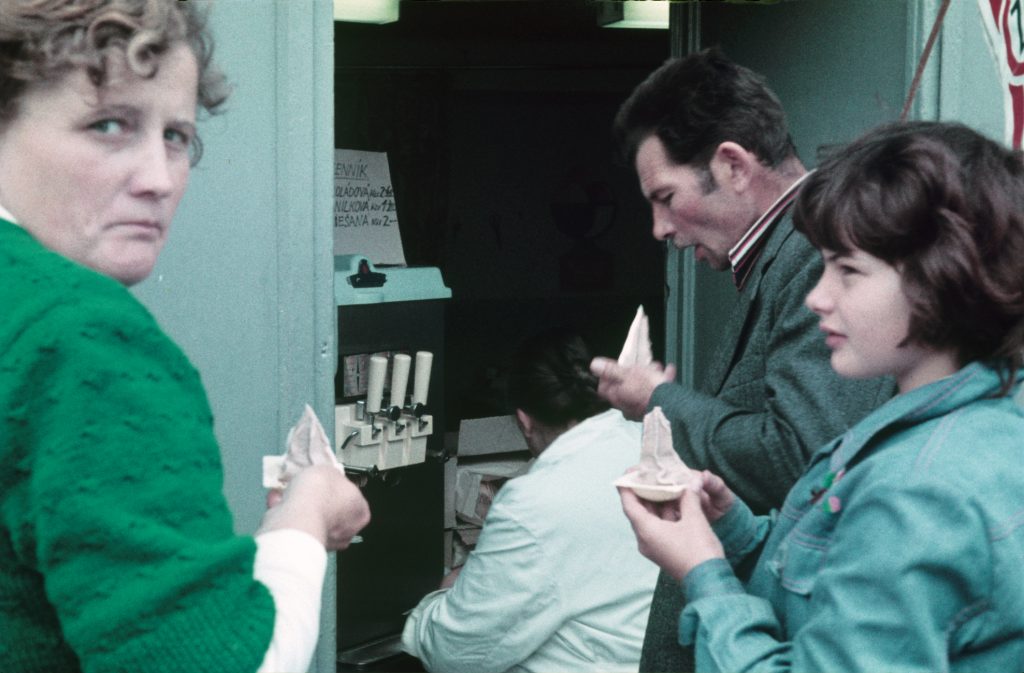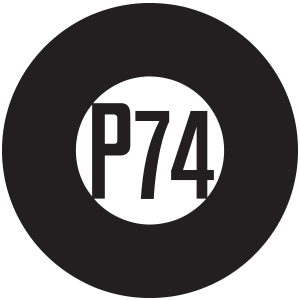
Photo: Matjaž Hanžek, Grob

Photo: Tadej Pogačar, DUNAJ BRATISLAVA, 1980
6 March – 4 May 2025
The Museum of Modern and Contemporary Art Koroška in Slovenj Gradec
______
The Museum of Modern and Contemporary Art Koroška in Slovenj Gradec and the P74 Gallery in Ljubljana are delighted to invite you to the opening of the exhibitions by Matjaž Hanžek, Something Completely Else (Sometimes I’m Tempted to Go), and Tadej Pogačar, The Fool on the Hill (Without Words). These two exhibitions will for the first time juxtapose some of their lesser-known and even unknown artworks from the early 1960s, 1970s and 1980s. Alongside the exhibitions, we are announcing the release of a new Artist Book by Matjaž Hanžek, titled Forks Are Pointing Up or Down.
>We would like to draw your attention to the preview of the new artist book by Matjaž Hanžek titled Forks Are Pointing Up or Down at the P74 Gallery. The price is a flat rate of 25 EUR. Available at P74 Gallery from 18 March 2025 (monday to friday, 12.00 to 18.00, saturday, sunday, national holidays closed, extra viewings upon individual arrangement).
______
Matjaž Hanžek’s artistic production is diverse, complex and multifaceted. Distinctly sceptical, cynical and destructive in its beginnings, it has always advocated language as its primary medium. Hanžek’s visual poetry has repeatedly transcended the confines of a book, magazine, and printed matter so that it could enter real space, becoming an object, an intermedia project, or a system. It has bypassed institutional forms of presentation and developed new informal forms of communication. Matjaž Hanžek has systematically experimented and expanded his artistic production from a two-dimensional surface into social space and innovative multimedia artefacts. Throughout his work, he adopted two operational strategies from the history of the avant-garde: the process of planning and programming and the principle of chance operations. He collaborated with the OHO movement (visual poetry, public actions, videos, and artist books) and later was active primarily in the countercultural revolutionaries’ circles. That environment had grown in social spaces not dedicated solely to visual art but was associated with diverse art forms and genres, including popular music, rock, jazz, and comics. The countercultural production consistently reflected the socio-political everyday life in which it was created. Hanžek sees language as a form of communication between individuals and groups that communicate on an aesthetic and social level.
Tadej Pogačar is an internationally renowned artist, curator and lecturer mainly interested in exploring the hidden or overlooked phenomena, practices, and relationships. In his post-conceptual art practice, he employs an interventionist and critical research method and implements participatory and collaborative practices. His work is rooted in situationism and counterculture. In 1990, he founded the Museum of Contemporary Art, which he renamed P.A.R.A.S.I.T.E. Museum of Contemporary Art in 1993. His exhibition features some of his earliest works, photographs, and performances, created between 1975 and 1980, many of which are unknown to the public. At the time of their creation, these works were not included in the established art system and did not have a coherent artistic audience. The alternative character of these artworks is best summed up by, first, the concept of action-without-an-event, as described by the artist regarding his earliest performances, and second, the notion of the delayed audience that Ivana Bago and Antonia Majača used for the Gorgona group and Tomislav Gotovac’s performances carried out in the 1960s in a natural environment and without any audience. Through the contemporary perception of art, it can be said that Pogačar’s early work represents a specific artistic practice of conceptual art, an institutional critique that in his work must be understood more broadly. A good example is the ZOO photographic series from 1979. These are images of captive animals whose natural environment has been changed by humans who have also taken over the care of their survival. The nature in the Zoo is culture. It is a form of museum installation in which animals are museum exhibits that are primarily an aesthetic fascination.
______
Majaž Hanžek (1949) is a visual artist, poet, sociologist and politician. In 1977, he graduated from the Faculty of Sociology, Political Sciences and Journalism in Ljubljana with a degree in sociology and subsequently worked at the Institute for Social Planning. As a notable representative of the local neo-avant-garde, he created the most comprehensive and diverse oeuvre of concrete and visual poetry in our country. His work in the 1960s, 1970s and 1980s is characterised by varied and open experimentation, from the first publications of poetry in the student newspaper Tribuna to collaborating in the OHO group, editing Problemi magazine and working on Radio Študent or leading the Škuc Association, etc. He published several books: Spatial Paper (1967), Four Poems (1967), We Are Looking For Poems, Where Are They (1969), A Washerwoman is Cutting a Duck’s Tail with Aleš Kermauner, Marko Pogačnik, Tomaž Šalamun, Franci Zagoričnik, I.G. Plamen, Milenko Matanović, Vojin Kovač – Chubby, Slavoj Žižek (1969), Draft (1972), 61 Texts (1977), Let’s Open the Windows, Burn the Old Rags (essays, 2011). He has participated in several group and solo exhibitions, including those in the Expanded Media Gallery in Zagreb, the Museum of Contemporary Art in Belgrade, the Artistic Meeting Gallery in Subotica, the Museum of Contemporary Art in Zagreb, the FM Centre for Contemporary Art in Milan, the Museum of Contemporary Art Metelkova in Ljubljana, the Bežigrad Gallery in Ljubljana, and the P74 Gallery in Ljubljana (A Room of One’s Own, 2023).
Tadej Pogačar (1960) is a visual artist and the founding and artistic director of the P74 Centre and Gallery and the P.A.R.A.S.I.T.E. Institute in Ljubljana. He graduated in 1984 from the Department of Ethnology and the Department of Art History of the Faculty of Arts in Ljubljana. In 1988, he graduated in painting from the Academy of Fine Arts in Ljubljana, where two years later he also completed his postgraduate studies. Over the past three decades, Tadej Pogačar has been exhibiting extensively in some of the most notable local and international exhibition venues, including the Gallery MC, New York (2025); Cukrarna Gallery, Ljubljana (2023); Institute for Contemporary Art, Zagreb (2022); Michaela Stock Gallery, Vienna (2020); Edit Russ Haus für Medienkunst, Oldenburg (2019); City Art Gallery Ljubljana (2018); Gallery of Contemporary Art in Leipzig; Museum of Contemporary Art in Montevideo, Uruguay (both 2017); Gagosian Gallery, Beverly Hills, Los Angeles, USA (2016); Liverpool John Moores University, Liverpool; Museum of Contemporary Art, Zagreb (2015 / retrospective); Museum of Modern Art, Ljubljana (2014 / retrospective); Brandhorst, Munich (2013), etc. He has participated in many of the most important international biennials of contemporary visual art, including the 49th Venice Biennale (2001), the 3rd Tirana Biennale (2005), the 2nd Prague Biennale (2005), the 27th São Paulo Biennale (2006), the 10th Istanbul Biennale (2007), the 2nd Canary Islands Biennale, Santa Cruz de Tenerife (2009), the 11th São Paulo Architecture Biennale (2017), and Manifesta 1 in Rotterdam (1996). He has received several awards and recognitions for his work, including the Franklin Furnace Award in New York (2001), the Trend Award for outstanding achievement in the field of visual arts (2008), the Jakopič Award (2009), and the George Kepes Award (M.I.T.) in Boston.
